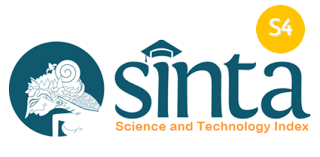EVALUASI PENGELOLAAN LIMBAH BAHAN BERBAHAYA DAN BERACUN DI PT PUPUK KALIMANTAN TIMUR
Main Article Content
Abstract
The increase in production capacity of an industry is directly proportional to the amount of B3 waste generated. PT Pupuk Kalimanta Timur at the largest NPK and urea fertilizer producer in Asia certainly also produces waste, one of which is hazardous waste. B3 waste requires special management before being returned to the environment given the dangers and impacts caused, starting from the source of B3 waste generated until it is dumped or buried. This study aims to identify and evaluate the management of B3 waste by comparing the management of B3 waste carried out by the company with applicable regulations and providing suggestions and recommendations and estimating the costs required for the construction of B3 waste TPS. Based on this research, there are still several discrepancies in the implementation of B3 waste management with applicable regulations, namely in storage and transportation activities. The amount of B3 waste generated in a period of 3 months is 115,662 kg or equivalent to 152 pallets. With the capacity of the existing B3 Waste Temporary Storage Site (TPSLB3) can only accommodate 228 pallets with an increase in production capacity, the existing TPS cannot accommodate all the waste generated so that a new B3 waste TPS building with the appropriate capacity is needed. The planned TPSLB3has dimensions of 26 m x 12 m x 5 m with a capacity of 112 pallets. The TPSLB3 is already equipped with supporting facilities such as a catch basin, safety shower, fire extinguisher, emergency exit, and lightning rod and is in accordance with applicable standards and regulations. The construction of the B3 waste TPS costs Rp 893,039,000.
Downloads
Article Details
Submission of a manuscript to Jurnal Purifikasi means that the work has never been published in another journal and is not under consideration for publication elsewhere. The author hereby agrees to submit the copyright of the manuscript and its contents to Jurnal Purifikasi, if accepted for publication. Accepted manuscripts will be published in printed form where the ISSN is bound in printed form, not in online form (pdf). Authors are not allowed to publish their work in other forms (journals) without permission from the Jurnal Purifikasi manager.
By submitting a manuscript, the author is deemed to know all the rights and obligations attached to each manuscript.








